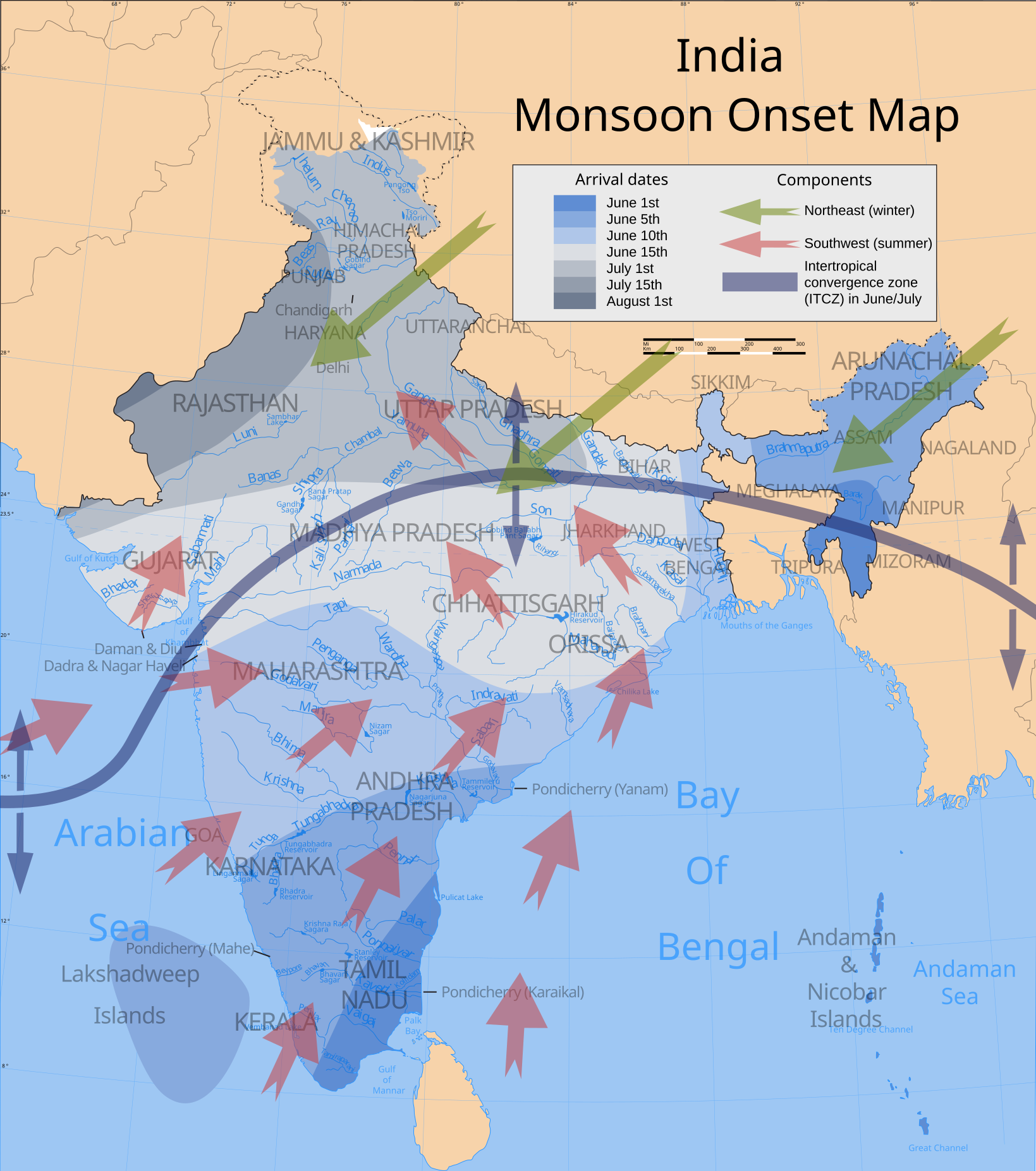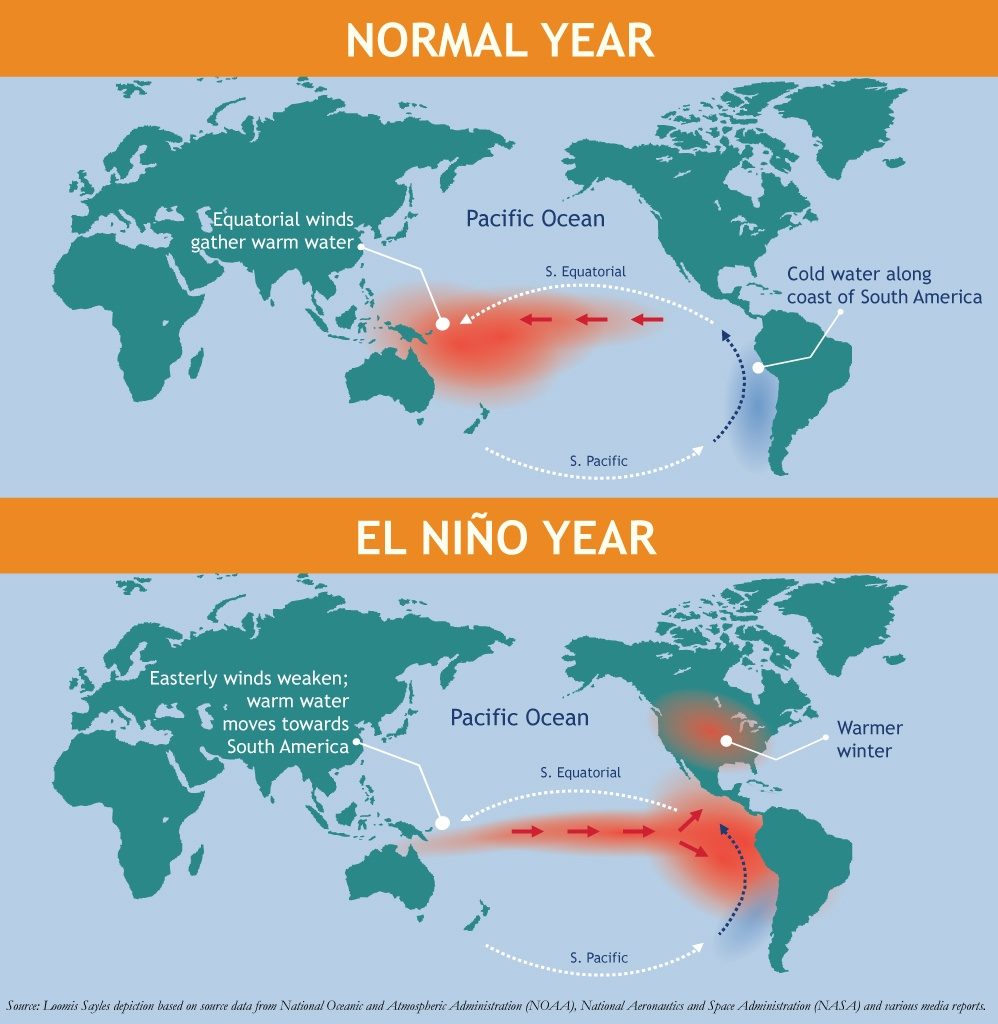Context:
The IMD has said that monsoon rains will likely be 101% of the Long Period Average (LPA) of 88 cm in 2021 and if everything aligns, India could see a third consecutive year of surplus rainfall.
Relevance:
GS-I: Geography (Climatology, Important Geophysical Phenomenon, Indian Geography)
Mains Questions:
What characteristics can be assigned to the Indian monsoon climate which calls for an improvement in its prediction models that are used now? Discuss in the context of uncertainty in Monsoon rainfall in India. (15 Marks)
Dimensions of the Article:
- What is Monsoon?
- Importance of Monsoon for India
- Issues with Prediction of monsoon in India
- El Nino and Indian Monsoon
What is Monsoon?
- Monsoon connotes the climate associated with a seasonal reversal in the direction of winds. India has a hot monsoonal climate which is the prevalent climate in the south and southeast Asia.
- The Indian summer monsoon typically lasts from June-September with large areas of western and central India receiving more than 90% of their total annual precipitation during the period, and southern and northwestern India receiving 50%-75% of their total annual rainfall.
- Overall, monthly totals average 200-300 mm over the country as a whole, with the largest values observed during the heart of the monsoon season in July and August.



Causes of Monsoon
- During the summer months, sunlight heats the surfaces of both lands and oceans, but land temperatures rise more quickly due to a lower heat capacity.
- As the land’s surface becomes warmer, the air above it expands and an area of low pressure develops.
- Meanwhile, the ocean remains at a lower temperature than the land and so the air above it retains a higher pressure.
- Since winds flow from areas of the high-pressure area to low, this deficit in pressure over the continent causes winds to blow in an ocean-to-land circulation (a sea breeze).
- As winds blow from the ocean to the land, moist air is brought inland. This is why summer monsoons cause so much rain.
Importance of Monsoon for India
The Monsoon is one of the most important single variables in the Indian economy as a good monsoon can reduce the burden on the government, while a bad one can make it spend more.
Positive effects of Monsoon
- The agricultural prosperity of India depends very much on time and adequately distributed rainfall. If it fails, agriculture is adversely affected particularly in those regions where means of irrigation are not developed.
- Regional variations in monsoon climate help in growing various types of crops.
- Regional monsoon variation in India is reflected in the vast variety of food, clothes and house types.
- Monsoon rain helps recharge dams and reservoirs, which is further used for the generation of hydroelectric power.
- Winter rainfall by temperate cyclones in north India is highly beneficial for Rabi crops.
Negative effects of Monsoon
- Variability of rainfall brings droughts or floods every year in some parts of the country.
- Sudden monsoon burst creates a problem of soil erosion over large areas in India.
- In hilly areas, sudden rainfall brings landslide which damages natural and physical infrastructure subsequently disrupting human life economically as well as socially.
Issues with Prediction of monsoon in India
Prediction of the exact behaviour of monsoon is very difficult and this makes it a problem for the Indian Metrological Department (IMD) as every year millions of Indians are dependent on its forecast.
- The topography of the Indian subcontinent makes the monsoon system very complex. Tropical weather is difficult to predict because weather systems in the tropics aren’t understood very well.
- The weather systems destabilise faster in the tropics than they do in the extra-tropics, where they persist for longer durations.
- Since it is difficult to predict the exact amount of rainfall, IMD relies just on a probabilistic forecast.
- A major problem has been to identify a small set of stable and independent parameters that influences the monsoon rainfall and the bulk of its variance. Many of the once strongly influencing parameters have declined in their correlations over the years – Hence, the search for a minimal set of stable and strongly enforcing parameters thus remains a constant one.
- Presently, the lack of enough and quality data (the IMD collects weather data like temperature, humidity, wind and precipitation through automatic weather stations, surface observatories, radiosonde or weather balloons, radars and three satellites) is one of the biggest challenges. There are also major data gaps, like those involving dust, aerosols, soil moisture and maritime conditions.
- Further, the automatic weather stations are of sub-standard quality. The upkeep of instruments is a major problem.
- Another issue is that dynamical models require a huge number of computations, for which supercomputers are required. As such, the need for an increased number of supercomputers remains a challenge for India.
- The correlation between El-Nino and Indian monsoon is still under research. And it is difficult to forecast exactly how much the El-Nino will affect.
- In addition to this, Global warming has also emerged as a factor that affects the monsoon forecast.
Two models for monsoon prediction
- Statistical model: This is specific to the monsoon and is based on 16 parameters determined by IMD, for which data is collected and fed into models. These models calculate the numbers based on mathematical equations. ‘Statistical models’ try to match prevailing conditions with historical records to see how the monsoon had behaved in years when similar conditions had prevailed.
- General circulation method/Dynamic model: This model makes continuous observation of some selected physical phenomena, and notes how the conditions for monsoon behave over a period of time. It then follows those changes to extrapolate for the future, and comes up with a forecast. IMD has recently started using this model for weather forecasts. However, this model has its own limitations.
El Nino and Indian Monsoon
- EI-Nino is a complex weather system that appears once every three to seven years, bringing drought, floods and other weather extremes to different parts of the world.
- The system involves oceanic and atmospheric phenomena with the appearance of warm currents off the coast of Peru in the Eastern Pacific and affects weather in many places including India.
- EI-Nino is merely an extension of the warm equatorial current which gets replaced temporarily by cold Peruvian current or Humbolt current (locate these currents in your atlas).
- This current increases the temperature of the water on the Peruvian coast by 10°C. This results in:
- The distortion of equatorial atmospheric circulation;
- Irregularities in the evaporation of seawater;
- Reduction in the number of planktons further reduces the number of fish in the sea.
- EI-Nino is used in India for forecasting long-range monsoon rainfall. In 1990-91, there was a wild EI-Nino event and the onset of southwest monsoon was delayed over most parts of the country ranging from five to twelve days.

-Source: The Hindu




